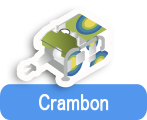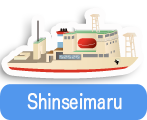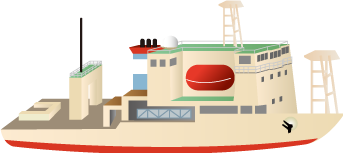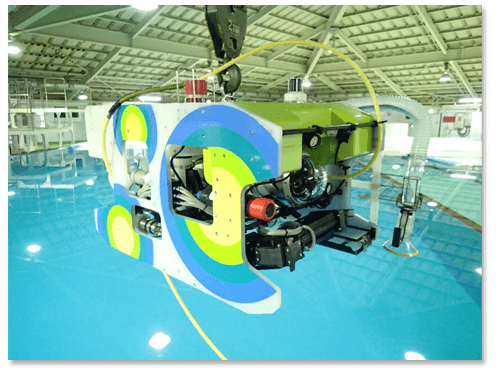
CRAMBON is a remotely operated vehicle used to investigate and observe the decomposition process of debris washed away by the Great East Japan Earthquake, and to observe and collect organisms living on the seafloor.
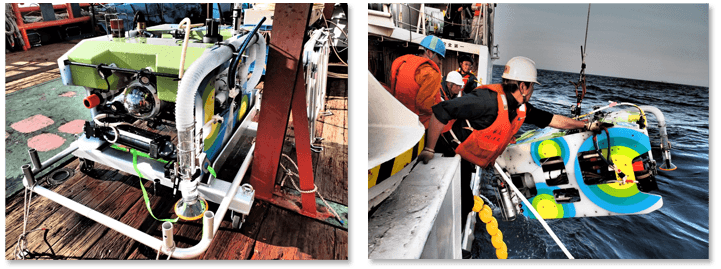
The name is derived from Crambon, which appears in a conversation between the crab’s children in “Yamanashi”, a short tale written by Kenji Miyazawa, who comes from Iwate Prefecture.
Crambon is an unspecified object, so there are many opinions on what it is. For example, some interpret it as something living in the water, others as air bubbles, and readers are free to imagine what Crambon really is. With the remotely-operated vehicle, CRAMBON, we will investigate an unknown world, the deep sea, most of which is unexplored and tantalizes our imagination.
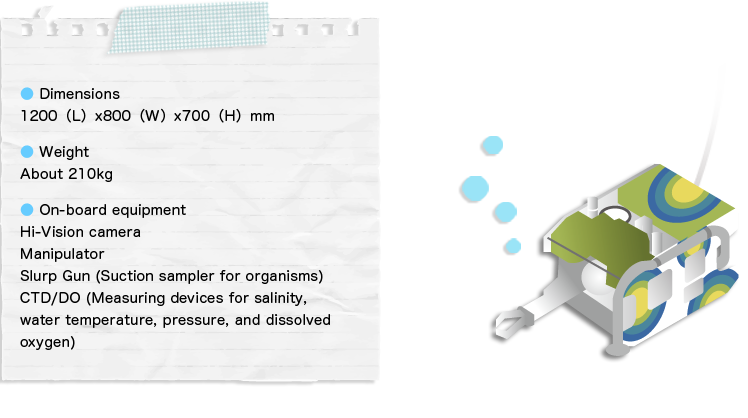
SHINSEI MARU was built as a successor to the research vessel TANSEI MARU which had carried out a diversified range of research to clarify effects of earthquake disaster shortly after the occurrence of the Great East Japan Earthquake, and been utilized to promote the "Tohoku Ecosystem-Associated Marine Sciences (TEAMS)" project until decommissioned in January 2013. SHINSEI MARU is expected to take over the predecessor vessel's role, and undertake research and study necessary for the TEAMS project efficiently and effectively by use of the most-advanced observation equipment and research facilities.

